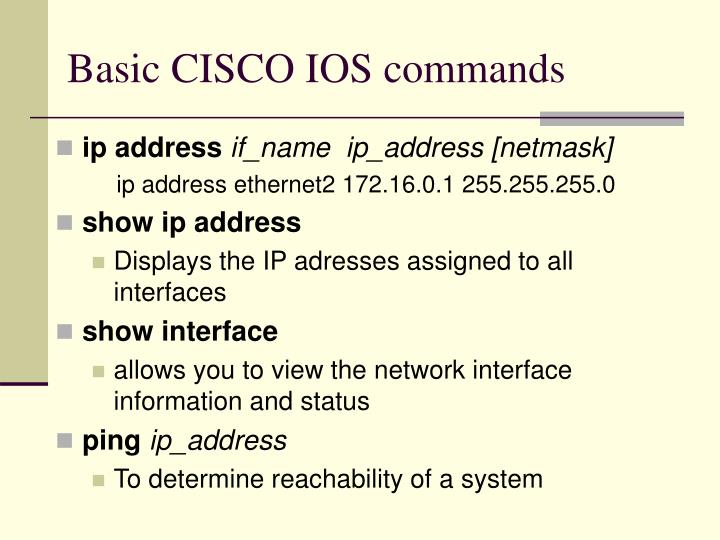

The IP address of the virtual router is the same as that configured for the Ethernet interface of Router A (10.0.0.1).īecause the virtual router uses the IP address of the physical Ethernet interface of Router A, Router A assumes the role of the virtual router master and is also known as the IP address owner.

In this example, Routers A, B, and C are VRRP routers (routers running VRRP) that comprise a virtual router. The figure below shows a LAN topology in which VRRP is configured. VRRP is supported on Ethernet, Fast Ethernet, BVI, and Gigabit Ethernet interfaces, and on MPLS VPNs, VRF-aware MPLS VPNs, and VLANs. The virtual router, representing a group of routers, is also known as a VRRP group. The LAN clients can then be configured with the virtual router as their default gateway. VRRP enables a group of routers to form a single VRRP can solve the static configuration problem. If the default gateway fails, the LAN client is limited to communicating only on the local IP network segment and is cut off from the rest of the network. This approach simplifies client configuration and processing, but creates a single point of failure. Also, in the event of a router failure, the process of switching to another router can be slow.Īn alternative to dynamic discovery protocols is to statically configure a default router on the client.

The drawback to dynamic discovery protocols is that they incur some configuration and processing overhead on the LAN client. ICMP Router Discovery Protocol (IRDP) client-The client runs an Internet Control Message Protocol (ICMP) router discovery client. Routing protocol-The client listens to dynamic routing protocol updates (for example, from Routing Information Protocol ) and forms its own routing table.
#Cisco ios mac#
Proxy ARP-The client uses Address Resolution Protocol (ARP) to get the destination it wants to reach, and a router will respond to the ARP request with its own MAC address.
Examples of dynamic router discovery are as follows: The client can use a dynamic process or static configuration. There are several ways a LAN client can determine which router should be the first hop to a particular remote destination. Vrrp timers advertise command to set the VRRP advertisement On a recently initialized BVI interface from unconditionally taking over theīridge forward-time command to set the forwarding delay The forwarding delay on the BVI interface. You must configure the VRRP advertise timer to a value equal to or greater than Private Networks (VPNs), VRF-aware MPLS VPNs, and VLANs.įorwarding delay that is associated with the initialization of a BVI interface, On Ethernet, Fast Ethernet, Bridge Group Virtual Interface (BVI), and GigabitĮthernet interfaces, and on Multiprotocol Label Switching (MPLS) Virtual Is not intended as a replacement for existing dynamic protocols. Restrictions for VRRPįor use over multiaccess, multicast, or broadcast capable Ethernet LANs. To access Cisco Feature Navigator, go to An account on is not required.
#Cisco ios software#
Use Cisco Feature Navigator to find information about platform support and Cisco software image support. To find information about the features documented in this module, and to see a list of the releases in which each feature is supported, see the feature information table. For the latest caveats and feature information, see Bug Search Tool and the release notes for your platform and software release. Your software release may not support all the features documented in this module.
#Cisco ios how to#
This module explains the concepts related to VRRP and describes how to configure VRRP in a network. In a VRRP configuration, one router is elected as the virtual router master, with the other routers acting as backups in case the virtual router master fails. A VRRP router is configured to run the VRRP protocol in conjunction with one or more other routers attached to a LAN. The Virtual Router Redundancy Protocol (VRRP) is an election protocol that dynamically assigns responsibility for one or more virtual routers to the VRRP routers on a LAN, allowing several routers on a multiaccess link to utilize the same virtual IP address. Additional References for Configuring VRRP.Example: Disabling a VRRP Group on an Interface.Example: VRRP MD5 Authentication Configuration Using a Key Chain.Example: VRRP MD5 Authentication Configuration Using a Key String.
#Cisco ios verification#


 0 kommentar(er)
0 kommentar(er)
